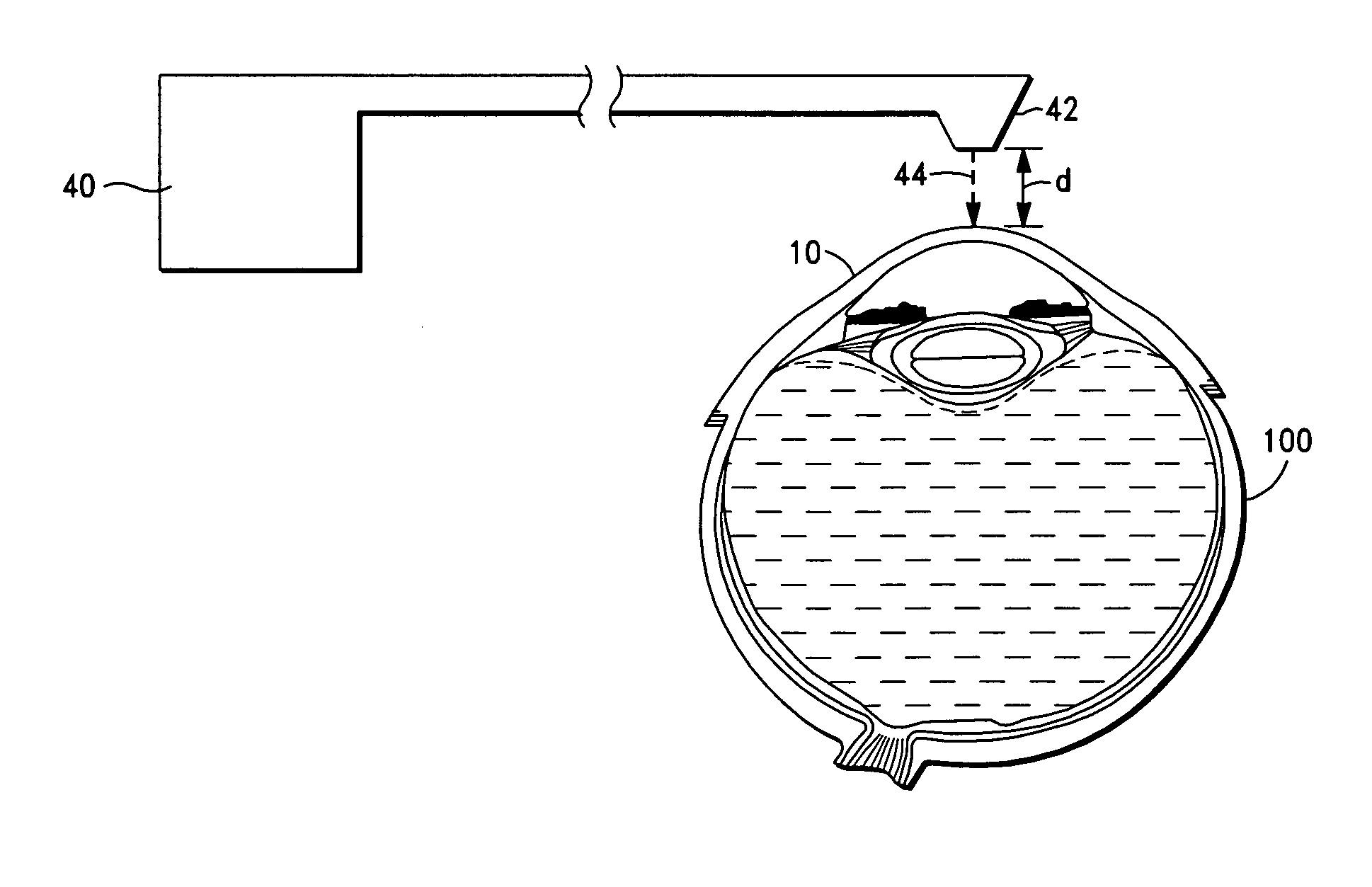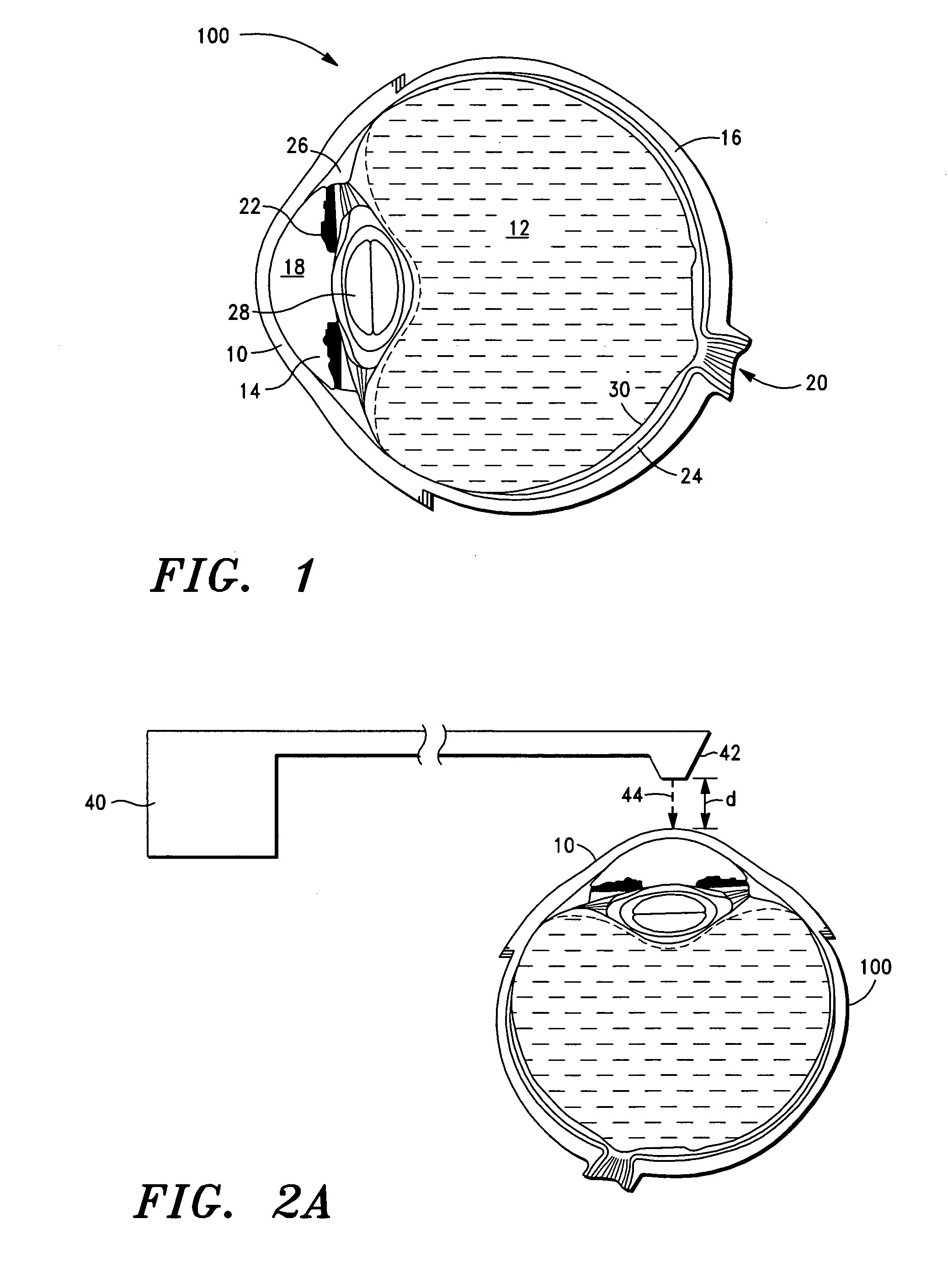Laser-based methods and systems for corneal surgery
a laser-based, corneal technology, applied in the field of laser-based methods and systems for corneal surgery, can solve the problems of poor predictability of surgery, lack of reproducibility, and deemed unsuitable for eye surgery, and achieve the effect of minimising the risk of eye damag
- Summary
- Abstract
- Description
- Claims
- Application Information
AI Technical Summary
Benefits of technology
Problems solved by technology
Method used
Image
Examples
example 1
[0123]Referring to FIGS. 3 and 4, the laser delivery head 42 is initially positioned a spaced distance (d) in the range of approximately 1.0-5.0 cm over the patient's cornea 10 via the laser source control means.
[0124]The size, degree and position of the laser beam 44 is selected and controlled by the laser source control means. The desired laser beam pattern, e.g. circular, scattered, linear, etc. is also selected and controlled by the laser source control means.
[0125]The noted laser beam 44 is then directed toward the eye 100 to a target eye structure, in this example, the cornea 10 via the laser head 42 (and appropriate optics and prisms) to perform myopic correction. FIG. 3 illustrates the ablation of the cornea 10, wherein a center portion 13 is flattened via the surface ablation of the cornea 10, during the myopic correction procedure.
example 2
[0126]In this example, the laser delivery head 42 is similarly positioned a spaced distance (d) in the range of approximately 5-10 cm over the patient's cornea 10 via the laser source control means. The laser beam 44 is then directed to the cornea 10 via the laser head 42 to perform hyperopia correction. FIG. 4 illustrates the surface ablation of the peripheral cornea 15 during the hyperopia correction procedure.
example 3
[0127]In this example, the laser delivery head 42 is similarly initially positioned a spaced distance (d) in the range of approximately 1.0-20 mm over the patient's cornea 10 via the laser source control means. The laser beam 44 is then directed to the cornea 10 via the laser head 42 to perform a LASIK® procedure, i.e. correction of a refractive error, by initially forming a corneal flap 17 and then, as illustrated in FIG. 5, performing surface ablation of the cornea 10 under the corneal flap 17.
PUM
 Login to View More
Login to View More Abstract
Description
Claims
Application Information
 Login to View More
Login to View More - R&D
- Intellectual Property
- Life Sciences
- Materials
- Tech Scout
- Unparalleled Data Quality
- Higher Quality Content
- 60% Fewer Hallucinations
Browse by: Latest US Patents, China's latest patents, Technical Efficacy Thesaurus, Application Domain, Technology Topic, Popular Technical Reports.
© 2025 PatSnap. All rights reserved.Legal|Privacy policy|Modern Slavery Act Transparency Statement|Sitemap|About US| Contact US: help@patsnap.com



